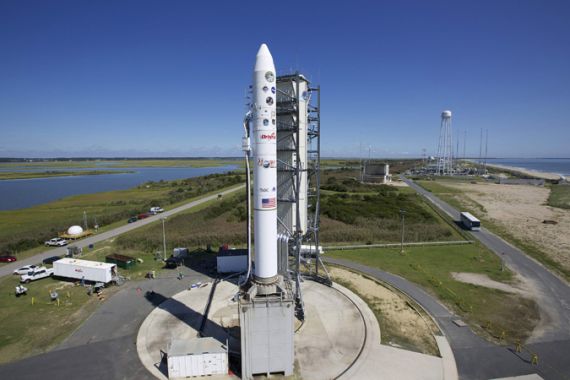NASA launches robotic explorer to moon
US space agency sends unmanned robotic explorer to study lunar atmosphere and dust as part of its new $280m mission.

An unmanned rocket has blasted off from NASA’s Wallops Flight Facility in Virginia in the US, with a robotic explorer on a mission to investigate the moon dust and atmosphere.
Called The Lunar Atmosphere and Dust Environment Explorer, or LADEE, the moon-orbiting craft will measure the thin lunar atmosphere.
Keep reading
list of 4 itemsHong Kong’s first monkey virus case – what do we know about the B virus?
Why will low birthrate in Europe trigger ‘Staggering social change’?
The Max Planck Society must end its unconditional support for Israel
Scientists want to learn the composition of the moon’s ever-so-delicate atmosphere and how it might change over time and whether dust actually levitates from the lunar surface.
Unlike the quick three-day Apollo flights to the moon, the LADEE will take a full month to get there. The six-month mission costs $280m.
It will orbit Earth’s closest neighbour for a few months, analysing the ever-so-delicate atmosphere and lunar dust.
An Air Force Minotaur rocket, built by Orbital Sciences Corp., is providing the ride.
This will be the first moonshot from Virginia. All but one of NASA’s approximately 40 moon missions, including the manned Apollo flights of the late 1960s and early 1970s, originated from Cape Canaveral, Florida.
The most recent were the twin Grail spacecraft launched two years ago. The lone exception, Clementine, a military-NASA venture, rocketed away from Southern California in 1994.
The soaring Minotaur rocket should be visible along much of the East Coast as far south as South Carolina, as far north as Maine and as far west as Pittsburgh.
The mission will last six months and end with a suicide plunge into the moon for LADEE, which is about the size of a small car.